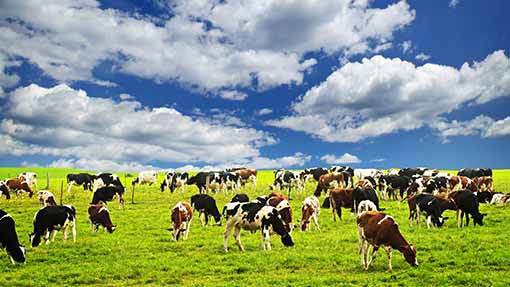Vet viewpoint: A regional round-up of key livestock issues

A regional monthly round-up of key veterinary issues from members of the XL Vets group.
Helen Rogers, Friars Moor Vet Clinic, Dorset
When PLI replaced PIN as the dairy selection index, by 2005 it incorporated health, fitness and fertility traits. This resulted in strong improvements in dairy cow fertility, with reductions in calving interval and, importantly, days to first service. Improvements in genetics of the national herd resulted in gains in everyday fertility of dairy cows.
See also Past vet viewpoints
Knowing the PLI of your herd and individual cows is incredibly important when choosing bulls for breeding. Alongside choosing correct type traits, bulls that improve a cow’s PLI status will produce offspring who produce more clean milk for longer, while remaining fertile. Your herd’s PLI breakdown is available from DairyCo as a Herd Genetic Report. It allows you to identify strengths and weakness in your herd, as well looking at how traits are improving in younger cows. I strongly recommend you start using your report.
Graeme McPherson, Larkmead Vet Group, Oxfordshire
While pregnancy testing for a client who also has a big, forward-thinking arable business, he said labour costs during drilling were not a concern as many more times these costs could be made through extra seed sown. In fact, marginal production, the last 5%, is all profit, and whatever it takes to improve this is worth doing.
Apply this to livestock and milk yield not lost to mastitis or lameness all becomes profit. The extra few calves you get from ensuring the herd is BVD free or from having bulls semen tested are all profit. Our veterinary bills may seem expensive if you use us to fix things that are broken. But they are small beans if you use us to help you improve your marginal production.
Stephen Bradley, Alnorthumbria Vet Group, Northumberland
We have seen lots of big lambs born this spring and the aim should be to finish them early. Creep feeding will improve weight gain and is cost-effective as the feed conversion ratio is much higher in smaller lambs. It is worth weighing lambs regularly to see if they are hitting their growth targets. Early intervention is better than having light lambs in the autumn.
Disease monitoring is vital to prevent costly losses. Monthly faecal worm counts for nematodirus and coccidiosis are recommended. PMs(???) any dead lambs as they may be the start of an outbreak.
Clostridial and pasteurella vaccinations are a valuable insurance policy for fast-growing lambs.
Fly-strike prevention is best done early with a long-acting pour-on as smaller doses are needed.
At weaning, mineral boluses or long-acting injections will be needed if there is a history of trace element deficiency on your farm.
Hollie Dale, Wright and Morten Vet Surgeons, Cheshire
As summer approaches, our spring calving herds are getting ready to turn bulls out. Every autumn we see at least one herd where the bull has failed to work, leading to a high rate of barren cows and a disrupted calving pattern. This is easy to prevent by getting your bulls’ fertility tested prior to the service period. You should look out for:
- Lameness – a major cause of reduced fertility.
- Condition score – bulls carrying too much condition tend to have low libido and poor fertility.
- Fertility is highly correlated with testicle size – when buying a new bull, select one with decent-sized testicles.
It’s never safe to just assume that your bull has worked.
